Transportation Alternatives Basics
Cherry Creek Regional Trail | Photo by TrailLink user angiedickson
Transportation Alternatives (TA) are federally funded, community-based projects that expand travel choices and enhance the transportation experience by integrating modes and improving the cultural, historic and environmental aspects of our transportation infrastructure. TA projects must be one of 10 eligible activities and must relate to surface transportation.
For example, projects can include creation of bicycle and pedestrian facilities, streetscape improvements, refurbishment of historic transportation facilities and other investments that enhance communities, connections and access. The federal government provides funding for TA projects through our nation’s Federal-aid highway transportation legislation.
Jump to: History | Funding | Applying | Eligibility | Activity Key
History
In 1991, the United States Congress passed the Intermodal Surface Transportation Efficiency Act (ISTEA), a $217 billion act responsible for financing much of the country’s transportation infrastructure over a six-year period. Unlike previous federal transportation legislation that strongly favored investment in highway infrastructure, ISTEA encouraged investment in multiple modes of transportation, such as mass transportation and pedestrian and bicycle facilities. One of the most significant means through which ISTEA promoted balanced, multi-modal transportation was through the creation of the “transportation enhancements” (TE) activities.
ISTEA defined 10 eligible activities. Its 1998 successor, the Transportation Equity Act for the 21st Century (TEA-21), expanded this list to twelve while requiring that all TE projects specifically relate to surface transportation. In 2005, the Safe, Accountable, Flexible, Efficient Transportation Equity Act: A Legacy for Users (SAFETEA-LU) continued funding for TE activities as a mandatory 10% set-aside of the Surface Transportation Program. After SAFETEA-LU expired on September 30, 2009, TE remained funded through an extension of SAFETEA-LU until September 30, 2012. For twenty years, these historic TE categories nationwide were implemented by state departments of transportation (DOTs) using these federal formula funds.
Most recently, the Fixing America’s Surface Transportation (FAST) Act and the Moving Ahead for Progress in the 21st Century (MAP-21) that preceded it, TE activities, along with the existing Recreational Trails Program and Safe Routes to School Program, were consolidated for funding. The activities previously known as transportation enhancements are now termed “transportation alternatives” and are redefined as 10 eligible project types. The new law also restricts which entities are eligible to apply for TA funds.
The program provides funds for innovative, community-based projects to enhance the travel experience by all modes: walking, biking, taking transit, and riding in a car, helping communities protect scenic vistas, create bike paths, develop walkable downtowns and protect the environment.
Funding
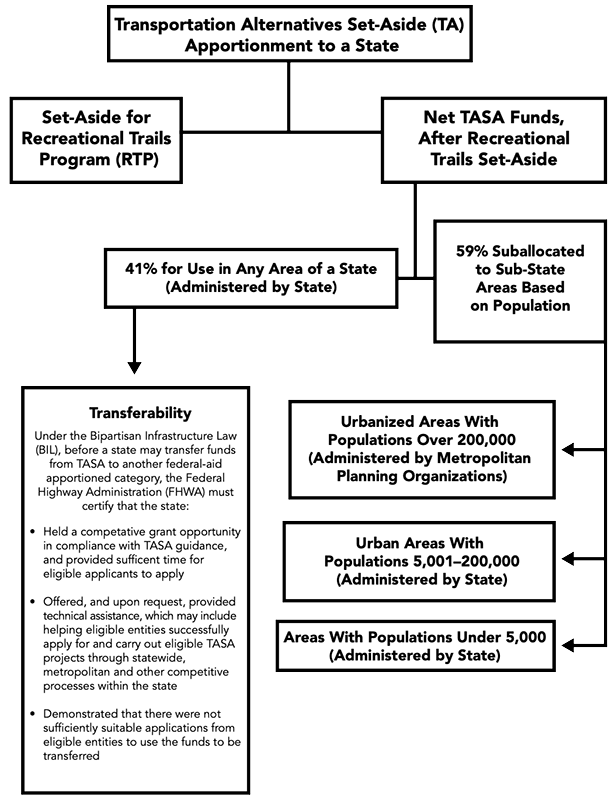
Funding for the Transportation Alternatives Set-Aside (TASA) program, which includes what was formerly the Transportation Alternatives Program and the Transportation Enhancements activities, the Recreational Trails Program, and the Safe Routes to Schools Program, sets aside a portion of each state’s Surface Transportation Block Grant (STBG) apportionment. These funds are proportionally disbursed to states based on apportionments in fiscal year 2009 of SAFETEA-LU.
At the state level, funding for the Recreational Trails Program is then set aside, based once again on FY 2009 funding levels, to be administered by an agency designated by the governor. The remaining TA funds are split in half. One half is suballocated to sub-state areas based on population. The other half is available for use anywhere in the state.
For funds suballocated to areas with a population greater than 200,000 (known as Transportation Management Areas or TMAs), the metropolitan planning organization (MPO) with jurisdiction in that area administers a competitive processes to allow eligible entities to submit projects for funding. For all other areas, including other designated urbanized areas and statewide funds, the state DOT administers a parallel process.
Under the FAST Act, the national TA apportionment totaled $835 million in FYs 2016 and 2017, and $850 million from FY 2018 – 2020.
Applying
The federal government has provided, on average, more than half a billion dollars each year since 1992 to the states as a whole to implement Transportation Alternatives-type projects. In general, each state department of transportation (DOT) is responsible for developing and administering its own TA program, and thus the program varies by state. Within a given state, metropolitan planning organizations (MPOs) for large cities also have jurisdiction over some TA funds, and discretion to implement their own selection processes. Both state DOTs and MPOs receive applications for TA funds from local governments, state and federal resource agencies, or nonprofit organizations partnered with governments. However, state DOTs may not generate internal project proposals.
A successful application must show that the project will relate to surface transportation and that it qualifies as one of the 10 eligible activities. Additionally, the applicant must demonstrate how the project will be financed. Typically, the applicant must be prepared to furnish at least 20 percent of the proposed project cost, with the federal government providing the remaining 80 percent, though this ratio varies from state to state.
Many TA projects occur outside of state-owned rights of way. In these cases, project sponsors must also be prepared to demonstrate how the project will be maintained after it is complete.
Tip For A Successful Application:
- Relate the proposed project to surface transportation
- Show that the project can be categorized as one or more of the 10 eligible activities
- Discuss the project’s potential economic, community, cultural, aesthetic, and/or environmental benefits, with data and graphs when applicable
- Use maps and data to show how the project will enhance access to local and regional transportation networks, if applicable
- Use maps to show the project site, if applicable, and relate it to other area destinations
- Make reference to similar successful projects
- Demonstrate how the project sponsor will fund 20 percent or more of project cost
- Demonstrate that there is community support for the project
- Relate the project to existing state and metropolitan transportation plans
If Your Project Is Selected:
- Confirm project parameters with state transportation agency staff
- Sign an agreement with your state agency
- Choose a project manager to consult with the state agency
- Obtain environmental clearance
- Plan and design the project
- Obtain clearance of rights-of-way
- Submit paperwork for design, procurement, bid and construction
- Invite bids for the project
- Select a contractor
- Invoice completed work and receive reimbursement
- Obtain a construction certificate
- Keep proper financial records in case of audit
- Celebrate your project!
Eligibility
A TA project is any activity related to surface transportation that fits one or more of these 10 categories. In addition, projects eligible under the Recreational Trails Program (RTP) and Safe Routes to School (SRTS) program qualify.
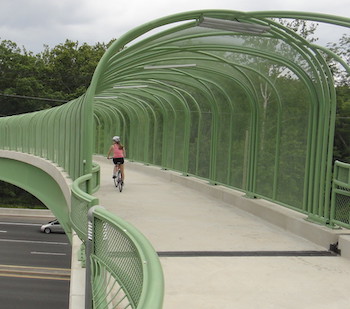
1. Pedestrian and Bicycle Facilities
Providing new or reconstructed sidewalks, walkways, curb ramps, bike lane striping, paved shoulders, bike parking, bus racks, off-road trails, bike and pedestrian bridges, and underpasses
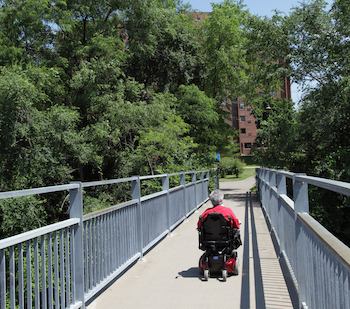
2. Safe Routes for Non-Drivers
Creating access and accommodation for children, older adults and individuals with disabilities
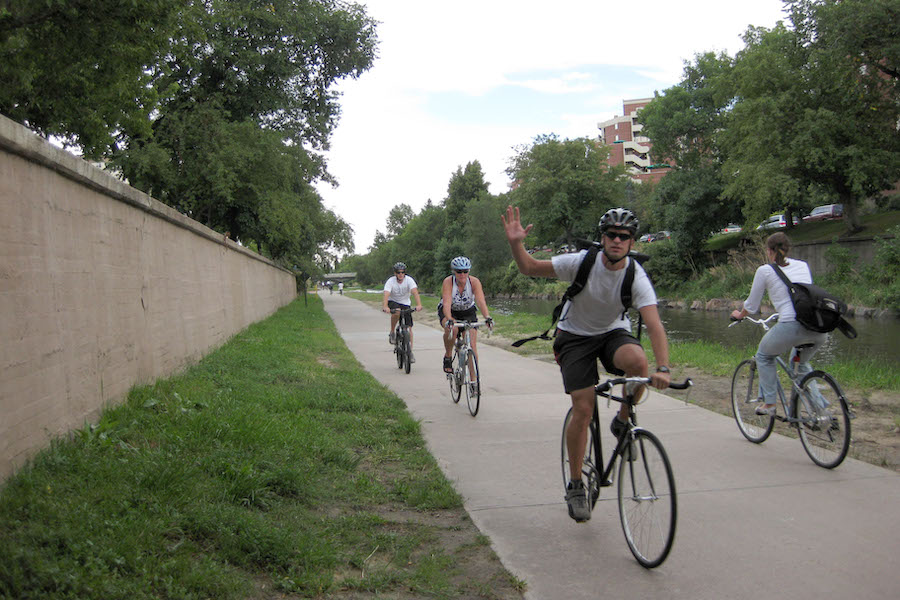
PROJECT EXAMPLE
Cherry Creek Regional Trail in Denver, CO
The Cherry Creek Regional Trail runs from downtown Denver for more than 40 miles, connecting multiple suburbs and counties to the heart of the city. Various TE grants with differing sources of matching funds have contributed to constructing and improving the trail including $417,000 in 1999 to the City of Denver, $164,844 in 2001 to the town of Glendale, $365,000 in 2003 to Arapahoe County, and an additional $315,000 to Denver in 2005. The end product is a trail that is one of the spines of a regional network of trails connecting travelers and destinations throughout the Denver area.
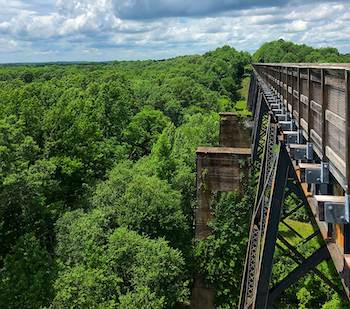
3. Conversion of Abandoned Railway Corridors to Trails
Acquisition of railroad rights-of-way; planning, design and construction of multiuse trails and rail-with-trail projects
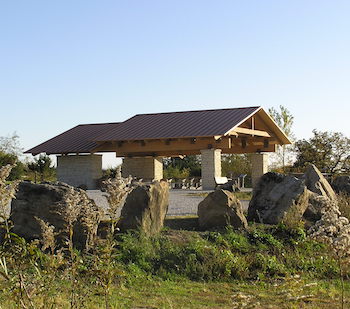
4. Scenic Turnouts and Overlooks
Construction of scenic turnouts, overlooks and viewing areas
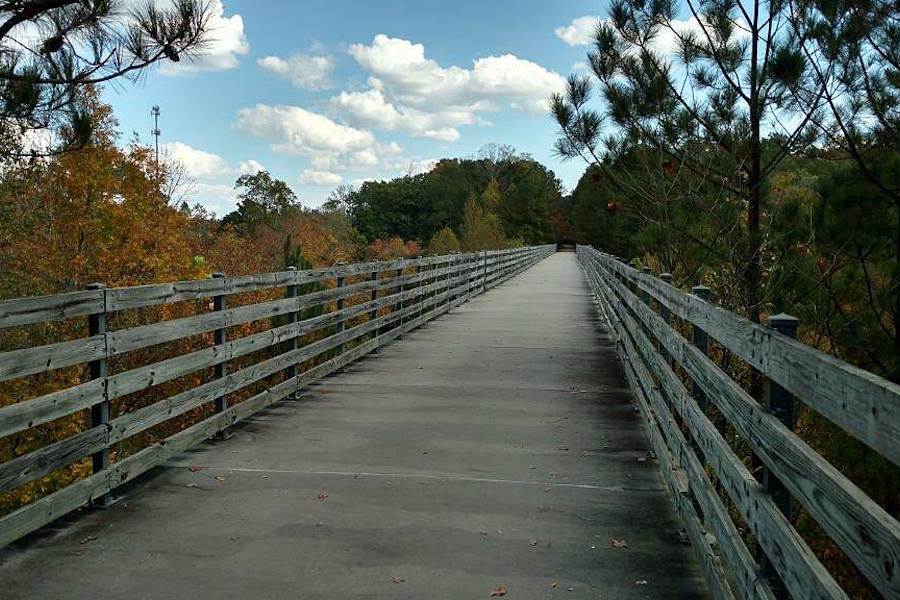
PROJECT EXAMPLE
Georgia’s Silver Comet Trail
The Silver Comet Trail, one of the most popular spots in northwest Georgia for outdoor recreation and bicycle commuting, sprouted from an abandoned rail corridor between Atlanta and the Alabama state line. Development of the Silver Comet Trail was supported by TE grants in 1998 ($695,000 with a $173,750 local match from the City of Rockmart), 2000 ($400,000 with a $202,840 local match from the Cobb County DOT; $50,000 with a $12,500 local match from the Paulding County Chamber of Commerce; and $959,000 with a $239,750 local match from Polk County), 2001 ($875,000 with a $343,200 local match from GDOT), and 2004 ($750,000 with a local match of $187,500 from the Cobb County DOT). The grants and matches total $4,888,540.
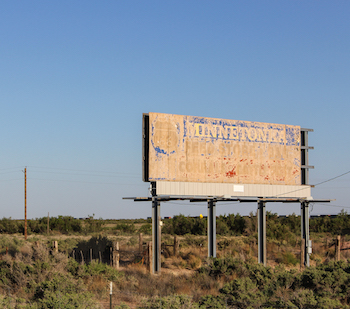
5. Outdoor Advertising Management
Conducting billboard inventories and removing illegal and nonconforming billboards
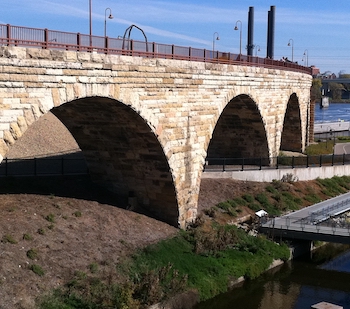
6. Historic Preservation and Rehab of Historic Transportation Facilities
Restoration of railroad depots, bus stations and lighthouses; rehabilitation of rail trestles, tunnels, bridges and canals; and more
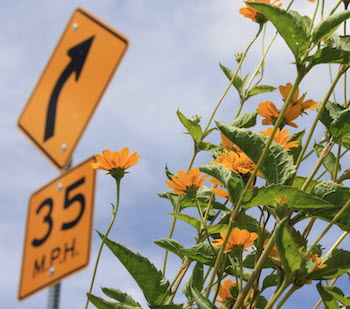
7. Vegetation Management
Improving roadway safety; preventing invasive species; providing erosion control
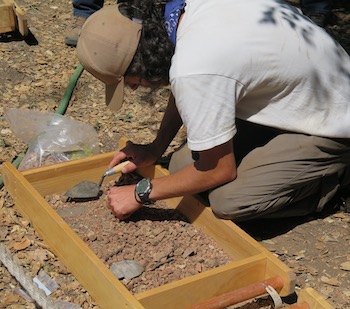
8. Archaeological Activities
Undertaking projects related to impacts from implementation of highway construction projects
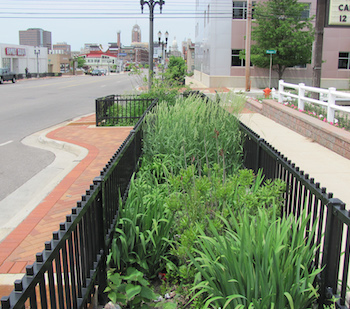
9. Stormwater Mitigation
Addressing stormwater management with pollution prevention and abatement activities; preventing water pollution related to highway construction or due to highway runoff
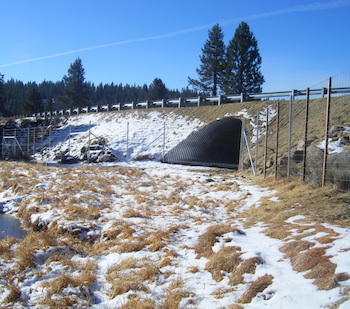
10. Wildlife Management
Reduction of vehicle-caused wildlife mortality; restoration and maintenance of connectivity among terrestrial or aquatic habitats
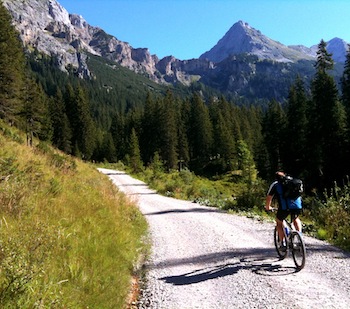
Recreational Trails Program
Construction and maintenance of recreational trails, trailside and trailhead facilities; acquisition of easements; assessment of trail conditions; producing publications and educational programs; and more
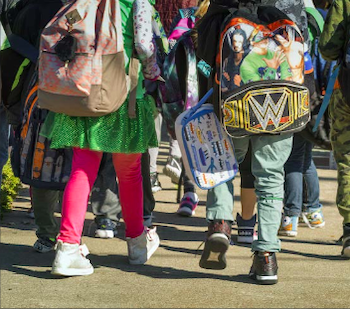
Safe Routes to School Program
Improving sidewalks, traffic calming, and pedestrian and bicycle crossings; providing on-/off-street bicycle facilities; implementing traffic diversion improvements; creating secure bicycle parking facilities; and more
Activity Key
Transportation Alternatives (TA) (FY 2013 – present)
| Category | Description |
| 101 | Construction, planning, and design of on-road and off-road trail facilities for pedestrians, bicyclists, and other nonmotorized forms of transportation, including sidewalks, bicycle infrastructure, pedestrian and bicycle signals, traffic calming techniques, lighting and other safety-related infrastructure, and transportation projects to achieve compliance with the Americans with Disabilities Act of 1990. |
| 102 | Construction, planning, and design of infrastructure-related projects and systems that will provide safe routes for non-drivers, including children, older adults, and individuals with disabilities to access daily needs. |
| 103 | Conversion and use of abandoned railroad corridors for trails for pedestrians, bicyclists, or other nonmotorized transportation users. |
| 104 | Construction of turnouts, overlooks, and viewing areas. |
| 105 | Inventory, control, or removal of outdoor advertising. |
| 106 | Historic preservation and rehabilitation of historic transportation facilities. |
| 107 | Vegetation management practices in transportation rights-of-way to improve roadway safety, prevent against invasive species, and provide erosion control. |
| 108 | Archaeological activities relating to impacts from implementation of a transportation project eligible under title 23. |
| 109 | Any environmental mitigation activity, including pollution prevention and pollution abatement activities and mitigation to address stormwater management, control, and water pollution prevention or abatement related to highway construction or due to highway runoff, including activities described in sections 133(b) (11), 328(a), and 329 of title 23. |
| 110 | Mitigation to reduce vehicle-caused wildlife mortality or to restore and maintain connectivity among terrestrial or aquatic habitats. |
| 111 | Other community improvement activities. |
Transportation Enhancements (TE) (FY 1992 – 2012)
| Category | Description |
| 001 | Pedestrian and bicycle facilities-Sidewalks, walkways or curb ramps; bike lane striping, wide paved shoulders, bike parking and bus racks; off-road trails; bike and pedestrian bridges and underpasses. |
| 002 | Pedestrian and bicycle safety and educational activities-Campaigns promoting safety awareness; safety training activities and classes; training materials. |
| 003 | Acquisition of scenic or historic easements and sites-Acquisition of scenic lands or easements; purchase of historic properties or buildings in historic districts, including historic battlefields. |
| 004 | Scenic or historic highway programs including tourist and welcome centers-Construction of turnouts and overlooks; visitor centers and viewing areas; designation signs and markers. |
| 005 | Landscaping and scenic beautificationImprovements such as street furniture, lighting, public art and landscaping along travel corridors. |
| 006 | Historic preservation- Preservation of buildings and facades in historic districts; restoration of historic buildings for transportation-related purposes; access improvements to historic sites. |
| 007 | Rehabilitation and operation of historic transportation buildings, structures or facilities- Restoration of railroad depots, bus stations and lighthouses; rehabilitation of rail trestles, tunnels, bridges and canals. |
| 008 | Conversion of abandoned railway corridors to trails-Acquisition of railroad rights-of-way; planning, design and construction of multi-use trails and rail-with-trail projects. |
| 009 | Inventory, control, and removal of outdoor advertising- Billboard inventories and removal of illegal and nonconforming billboards. Inventory control may include, but not be limited to, data collection, acquisition and maintenance of digital aerial photography, video logging, scanning and imaging of data, developing and maintaining an inventory and control database, and hiring of outside legal counsel. |
| 010 | Archaeological planning & research- Research, preservation planning and interpretation; developing interpretive signs, exhibits and guides; inventories and surveys. |
| 011 | Environmental mitigation of runoff pollution and provision of wildlife connectivity- Runoff pollution studies; soil erosion controls; detention and sediment basins; river clean-ups; wildlife underpasses. |
| 012 | Establishment of transportation museums-Conversion of railroad stations or historic properties into museums with transportation themes; construction of new museums; purchase of exhibit materials. |